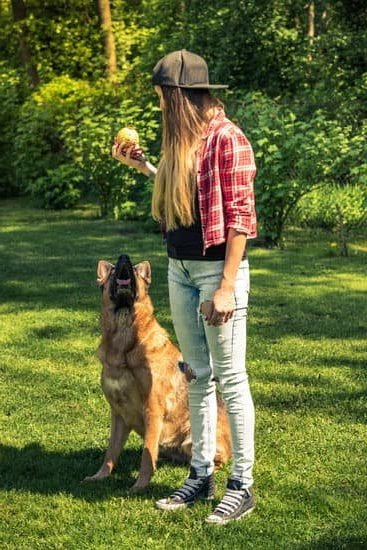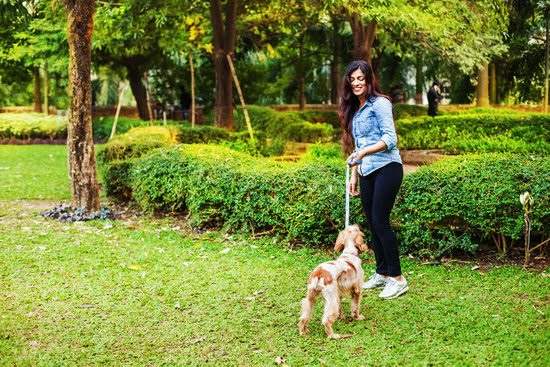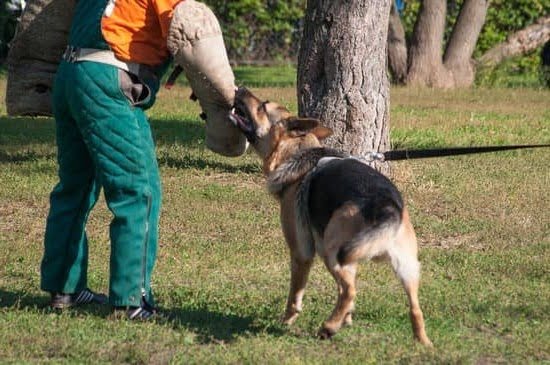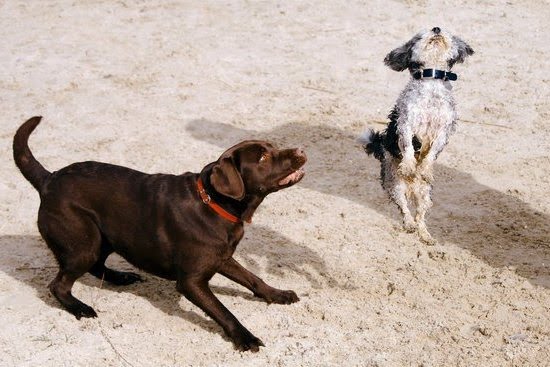Training dogs to use pads is an essential skill for dog owners, providing them with a convenient solution for housebreaking their pets. This introductory section will explore the importance of training dogs to use pads, highlighting the convenience it offers and discussing the potential challenges of housebreaking dogs. By understanding why pad training is crucial, dog owners can embark on this journey with confidence and effectively teach their furry companions this valuable skill.
One of the main reasons pad training is important is because it offers convenience for dog owners. Pads provide an alternative solution for pet parents who are unable to let their dogs outside frequently or have limited access to outdoor spaces.
With pads, dog owners can create a designated area for their pets to eliminate indoors, eliminating the need for constant monitoring or hurried trips outside during extreme weather conditions. Additionally, using pads saves time in cleaning messes around the house, making it a favorable option for those leading busy lifestyles.
However, despite these conveniences, housebreaking dogs can be a challenging task. Many new pet owners may face difficulties in teaching their pups where they should eliminate. Accidents and soiled carpets can occur as dogs learn proper bathroom habits. That’s why investing time and effort into training dogs to use pads is crucial. By following effective training techniques and strategies outlined in this article, pet owners can successfully overcome these challenges and establish good potty habits in their furry friends.
In the next sections of this article, we will delve deeper into the benefits of using pads for dog training, discuss how to choose the right type of pads for your dog’s needs, and explore step-by-step instructions on introducing your dog to using pads effectively. So let’s get started on this rewarding journey towards successfully training our beloved canine friends.
Understanding the Benefits of Using Pads for Dog Training
Using pads for dog training offers several benefits that make it a popular choice among dog owners. Understanding these benefits is essential for those considering pad training and wanting to provide the best environment for their dogs.
Cleanliness and Hygiene
One of the primary advantages of using pads for dog training is the cleanliness and hygiene aspect it offers. Pads are designed with absorbent materials that effectively trap and control odor, preventing it from spreading throughout the house. This keeps the living space clean and fresh, reducing the chances of unpleasant smells permeating the entire home.
Additionally, using pads allows for easier cleanup compared to other methods such as newspapers or inside litter boxes. Once the pad is soiled, it can be easily discarded or washed in the case of washable or reusable pads. This helps maintain a hygienic environment while minimizing messes and keeping your home sanitary.
Apartment Living or Extreme Weather Conditions
Another benefit of pad training is its suitability for dogs living in apartments or during extreme weather conditions. For those residing in high-rise buildings with limited access to outdoor spaces, pad training provides a convenient solution. Dogs can easily relieve themselves indoors without the need for constant trips up and down stairs or elevators.
Similarly, during extreme weather conditions such as heavy rain, snowstorms, or scorching heatwaves, taking dogs outside may not be feasible or safe. Pad training provides an alternative option that ensures your dog’s needs are met even when outdoor excursions are not possible.
Understanding these benefits highlights why using pads for dog training can be a practical and beneficial choice, offering convenience, cleanliness, and comfort both for you as a dog owner and for your furry companion.
Choosing the Right Type of Pads for Your Dog
When training your dog to use pads, it’s important to choose the right type of pads that will meet your dog’s needs. There are three main types of pads available: disposable, washable, and reusable. Each type has its own advantages and considerations.
Disposable pads are a popular choice for many dog owners due to their convenience. These pads are made of absorbent materials and can be easily disposed of after each use. They come in various sizes and absorbency levels, allowing you to select the one that suits your dog’s size and needs. Disposable pads are particularly useful if you have a busy schedule or limited access to laundry facilities.
On the other hand, washable pads offer durability and cost-effectiveness. Made of materials like fabric or microfiber, these pads can be reused multiple times after washing. Washable pads are an eco-friendly option that can save you money in the long run. However, keep in mind that they may require more effort in terms of cleaning and maintenance compared to disposable ones.
Reusable pads combine the benefits of both disposable and washable options. These pads typically have a waterproof backing that prevents leaks onto your floors. With reusable pads, you can change the insert while keeping the same pad base. This makes them a cost-effective and environmentally friendly choice while also minimizing cleaning efforts.
In addition to selecting the type of pad, it is crucial to choose the appropriate size and absorbency level for your dog. A pad that is too small may not provide enough coverage, leading to accidents outside the designated area. On the other hand, an overly large pad may be overwhelming for smaller dogs or puppies who prefer smaller spaces.
Consider your dog’s breed, age, and daily elimination habits when determining what absorbency level is suitable. For example, younger puppies may need high-absorbency pads until they develop better bladder control. Larger breeds or senior dogs may also require higher absorbency due to their larger urine output.
By carefully evaluating the different types of pads available and considering your dog’s specific needs, you can choose the right type, size, and absorbency level that will make pad training a success. Remember, the goal is to create a comfortable and clean training environment for your dog while effectively managing their bathroom needs.
Setting Up the Perfect Pad Training Area
Choosing an appropriate location for the pad training area is essential to successful dog training. Here are some tips to help you set up the perfect pad training area for your furry friend:
Selecting the Right Location
The first step in setting up a pad training area is picking the right location in your house. Ideally, choose an easily accessible area that is away from high-traffic areas or places where your dog spends most of their time. A quiet corner or a designated room can be ideal choices. Make sure there’s enough space for your dog to comfortably move around and access the pad.
Creating Consistency
Consistency is key when it comes to training dogs to use pads. Once you’ve chosen a location for the pad training area, maintain that consistency throughout the training process. Avoid moving the pad around as this may confuse your dog and make it harder for them to understand where they should eliminate.
Designating the Training Area
To establish clear boundaries, designate a specific spot in the chosen location for the pad training area. You can use baby gates or playpens to create a defined space if needed. This helps prevent accidents outside of the designated area and provides structure for your dog during the training process.
Protecting Your Floors
It’s important to protect your floors from any potential messes during the training period. Place a plastic mat or a tray underneath the pad to catch any spills or leaks. This way, even if accidents happen, it will be easier to clean up and keep your floors clean.
Remember that setting up an appropriate pad training area is just one aspect of housebreaking your dog successfully. Consistency, positive reinforcement, and patience are equally important factors in achieving desired results. With a well-designed pad training area and consistent guidance, you’ll be on your way to successfully train your dog to use pads.
Introducing Your Dog to the Pad
When it comes to training your dog to use pads, the process of introducing them to the pad area is a crucial step. This section will provide you with step-by-step instructions on how to familiarize your dog with the pad’s scent and texture, making the training experience smoother and more successful.
- Start by placing the pad in a small confined area: Begin by selecting a small space in your home where you want to establish the pad training area. This could be a bathroom, laundry room, or any other enclosed space that is easily accessible for your dog. Place the pad on the floor and secure it with adhesive strips or a holder if necessary.
- Encourage exploration: Allow your dog to explore the designated area freely. If your dog shows interest in sniffing or investigating the pad, offer verbal praise or a small treat as positive reinforcement. This helps create a positive association with the pad from the beginning.
- Transfer scent and encourage usage: To further familiarize your dog with the pad, you can transfer some of their urine onto it using a paper towel. Gently press the towel onto an existing accident spot and then place it on top of the pad. The scent will attract your dog and encourage them to use it for elimination.
- Supervise and redirect: As your dog begins to show signs of needing to eliminate, such as circling or sniffing around, gently guide them towards the pad area using verbal cues like “go potty” or “use your pad.” If they start heading elsewhere, quickly interrupt their behavior by clapping or making a noise to redirect their attention back towards the training area.
- Reward success: When your dog successfully uses the pad for elimination, promptly reward them with treats and enthusiastic praise. Reinforcing this positive behavior will motivate them to continue using the pads consistently.
Remember that each dog is unique, so be patient and adapt the training process to suit your dog’s individual needs. Consistency, positive reinforcement, and patience will be key in successfully introducing your dog to the pad and establishing a solid foundation for pad training.
Using Positive Reinforcement Techniques
Positive reinforcement is a crucial aspect of training dogs to use pads effectively. It involves rewarding and encouraging your dog’s desired behavior, such as using the pad for elimination. By using positive reinforcement techniques, you can create a positive association for your dog with the pad, making them more likely to use it consistently. Here are some tips and tricks on using treats, praise, and rewards to encourage your dog’s pad usage:
- Treats: Dogs are highly food-motivated, so using treats as a reward can be an effective way to train them. When your dog successfully uses the pad for elimination, immediately reward them with a small treat that they find highly desirable. Make sure to give the treat within seconds of their correct behavior to reinforce the connection between using the pad and receiving a reward.
- Praise: Alongside treats, verbal praise is essential in reinforcing positive behavior. Whenever your dog successfully uses the pad, shower them with enthusiastic verbal praise such as “good boy” or “great job.” Use a cheerful tone of voice to let your dog know that they are doing well.
- Rewards: In addition to treats and praise, consider incorporating additional rewards that motivate your dog. Some dogs may respond well to toys or playtime as rewards for correctly using the pads. Experiment with different types of rewards to find what motivates your own furry friend.
Remember that consistency is key when utilizing positive reinforcement techniques. Always provide immediate rewards when your dog uses the pad correctly and avoid punishing or scolding them for accidents outside the designated area. Positive reinforcement encourages good habits and helps build a strong bond between you and your beloved pet.
Using these positive reinforcement techniques will help create a positive association between your dog and the pads, increasing their motivation to use them consistently for elimination purposes.
Establish a Routine and Consistency
Establishing a routine and consistency is crucial when it comes to training dogs to use pads. Dogs thrive on predictability and structure, so creating a routine for their pad training sessions will help them understand what is expected of them. Consistency is key in reinforcing the desired behavior and ensuring that the dog understands where they are supposed to eliminate. Here are some tips on establishing a routine and maintaining consistency during pad training:
- Schedule regular pad training sessions: Set specific times throughout the day for pad training sessions. This can be after meals, first thing in the morning, before bedtime, or any other time that suits your dog’s natural bathroom habits. By consistently practicing pad training at these designated times, you are establishing a routine that your dog will become accustomed to.
- Use cues or commands: Introduce a specific cue or command that signals to your dog that it’s time to use the pad. For example, you can say “Go potty” or “Go to the pad.” Using consistent cues helps your dog understand what is expected of them and reinforces the association between the cue and using the pad.
- Monitor food and water intake: Keep track of when your dog eats and drinks to anticipate their bathroom needs. By monitoring their intake, you can schedule pad training sessions accordingly and increase the chances of success.
- Praise and rewards: During each successful pad usage, provide plenty of praise, treats, or rewards to reinforce the positive behavior. Consistently rewarding your dog for using the pads will motivate them to continue doing so.
| Tips for Establishing Routine and Consistency | Examples |
|---|---|
| Schedule regular pad training sessions | Set specific times throughout the day for pad training sessions (e.g., after meals, first thing in the morning, before bedtime). |
| Use cues or commands | Introduce a specific cue or command that signals to your dog that it’s time to use the pad (e.g., “Go potty” or “Go to the pad”). |
| Monitor food and water intake | Keep track of when your dog eats and drinks to anticipate their bathroom needs. |
| Praise and rewards | Provide plenty of praise, treats, or rewards after each successful pad usage. |
By establishing a routine and maintaining consistency in your dog’s pad training, you are setting them up for success. Remember, every dog is different, so be patient and adjust the routine as needed to suit your dog’s needs. Consistency is essential to reinforce desired behavior, and over time, your dog will develop good habits and become proficient at using pads for elimination.
Troubleshooting Common Challenges with Pad Training
While training your dog to use pads can be a convenient solution, it’s important to acknowledge that there may be some challenges along the way. Understanding these common issues and having strategies to overcome them will help make the training process smoother and more successful.
One of the most common challenges encountered during pad training is accidents occurring outside the designated pad area. This can happen due to various reasons such as inadequate supervision or confusion about where the dog is supposed to eliminate. To address this challenge, it’s crucial to closely monitor your dog when they are not confined to a crate or a specific area.
If you notice them starting to eliminate outside the pad area, interrupt them gently but firmly and quickly redirect them to the designated spot. Consistency is key in reinforcing this behavior, so make sure you consistently guide your dog back to the pad area whenever accidents occur.
Another challenge that some dog owners face is their pet’s reluctance to use pads. Some dogs may resist using pads because they are unfamiliar with them or find them uncomfortable. To encourage your dog’s acceptance of pads, try making gradual adjustments and introducing positive reinforcement techniques.
Start by placing a small piece of a used pad in an area near their regular elimination spot, so they become familiar with the scent. Additionally, praising and rewarding your dog each time they use the pad correctly will create positive associations and motivate them to continue using it.
It’s also important to note that accidents can happen during the training process, especially if your dog has not fully grasped the concept yet. Instead of getting frustrated or scolding your pet for accidents, remain patient and consistent in providing guidance and reinforcement.
If an accident occurs outside of the designated area, clean it up thoroughly with an enzymatic cleaner that eliminates odors instead of masking them. This will help prevent repeat incidents in the same location and minimize confusion for your dog.
By addressing these common challenges head-on and implementing effective strategies, you can successfully navigate the pad training process with your dog. Remember that each dog is unique, and it may take some time for them to fully grasp the concept. Stay patient, provide consistent guidance and reinforcement, and soon you’ll find that your furry friend is using pads with ease.
Gradual Transition from Pads to Outside Elimination
Transitioning your dog from using pads for elimination to going outside is an important step in their training journey. While pads provide convenience and flexibility, ultimately, the goal is for your dog to learn to eliminate outdoors. This section will guide you through the process of making a gradual transition from pads to outside elimination.
The first step in the transition process is to start taking your dog outside for potty breaks regularly. Choose a specific spot in your yard or designated outdoor area where you want your dog to eliminate. Take them to this spot after meals, after waking up, and before bedtime. Make sure to use consistent verbal cues such as “go potty” or “do your business” to help them associate those words with the act of eliminating.
Continue using the pads indoors but gradually decrease the number of pads available in the house. Start by removing one pad at a time while still providing access to one or two remaining pads. As your dog starts showing signs of understanding and consistently eliminates outdoors, you can begin reducing the number of indoor pads even further.
It’s important to closely monitor your dog during this transition phase and anticipate when they may need to go outside. Look for signs such as sniffing around or circling that indicate they may need to eliminate. If you notice these behaviors, quickly take them outside and reward them with praise and treats when they eliminate in the appropriate spot.
Remember, accidents are a normal part of the learning process, so be patient with your pup during this transition period. If there are accidents inside, avoid scolding or punishing your dog as it might hinder their progress and create a negative association with eliminating in front of you. Instead, clean up any messes without drawing attention to them and focus on reinforcing positive behavior when they do eliminate outside.
With consistency, patience, and positive reinforcement, your dog will eventually learn that eliminating outdoors is the desired behavior. Celebrate their success along the way and continue to reinforce proper elimination habits by providing regular potty breaks and maintaining a consistent routine. Soon enough, your dog will become fully transitioned from using pads to comfortably relieving themselves outside.
Conclusion
In conclusion, training dogs to use pads is a valuable skill that provides convenience for dog owners and addresses the challenges of housebreaking. Throughout this article, we have emphasized the benefits of using pads, such as cleanliness and hygiene, especially during apartment living or extreme weather conditions. We have also provided guidance on choosing the right type of pads for your dog and setting up the perfect pad training area.
Introducing your dog to the pad and using positive reinforcement techniques are crucial in the training process. By familiarizing your dog with the pad’s scent and texture and consistently rewarding them for using it, you can encourage their pad usage. Establishing a routine and being consistent with training sessions is essential for success. By following a schedule that aligns with your dog’s natural bathroom habits, you can effectively reinforce their understanding of using the pads.
Throughout the training journey, there may be common challenges such as accidents outside the designated pad area or reluctance to use pads. However, by troubleshooting these issues and implementing practical solutions like increasing supervision or adjusting pad locations, you can overcome these obstacles. Over time, you can gradually transition your dog from relying on pads to going outside for elimination. By reducing their dependency on pads and reinforcing positive outdoor behavior, you can ensure long-term success.
Lastly, it is important to celebrate each small success along the way. Training dogs to use pads takes time, patience, and consistency. It is essential for pet owners to remain dedicated to their dogs’ progress and recognize their achievements. Additionally, maintaining cleanliness throughout this process by regularly changing pads will contribute to maintaining good hygiene standards at home.
By following these tips and remaining committed to training dogs to use pads, pet owners can enjoy a clean home environment while providing a comfortable space for their furry friends to relieve themselves. Remember, progress takes time – celebrate each step towards success.
Frequently Asked Questions
How do I get my dog to use a pee pad?
To get your dog to use a pee pad, you should first choose a designated area in your home where you want the pee pad to be placed. Introduce the pee pad to your dog by placing it in that area and allowing them to sniff and explore it. When your dog shows signs of needing to relieve themselves, such as circling or sniffing around, gently guide them towards the pee pad and encourage them to use it.
If they do so successfully, reward them with praise or a small treat. Consistency is key in training, so try to create a routine where you take your dog to the designated spot on the pee pad at regular intervals throughout the day. Over time, with positive reinforcement and patience, your dog will learn to associate the pee pad with their bathroom needs.
Is it hard to train a dog to use a pee pad?
Training a dog to use a pee pad can vary in difficulty depending on the individual dog and their previous training experiences. For some dogs, especially those that are already accustomed to going outside for bathroom breaks, it may require more effort and consistency to transition them to using a pee pad indoors. However, many dogs can be successfully trained to use a pee pad with patience and positive reinforcement techniques.
The key is in being consistent in your training approach and providing clear signals and rewards for desired behavior. While it may take some time and effort, training a dog to use a pee pad is generally not considered extremely difficult.
How long does it take to pad train a dog?
The time it takes to pad train a dog can vary depending on various factors such as the age of the dog, their previous training experiences, their overall temperament, and consistency in training methods used by their owner. On average, it may take between two weeks to several months for a dog to be fully trained on using a pee pad consistently.
This timeframe allows for gradual learning and adjustment as dogs develop new habits and routines associated with using the designated spot for their bathroom needs. It’s important not to rush the training process and to be patient with your dog as they learn this new behavior.

Welcome to the blog! I am a professional dog trainer and have been working with dogs for many years. In this blog, I will be discussing various topics related to dog training, including tips, tricks, and advice. I hope you find this information helpful and informative. Thanks for reading!





